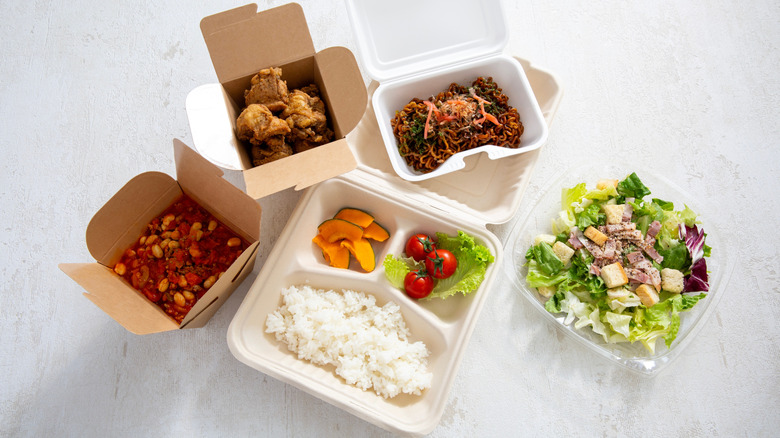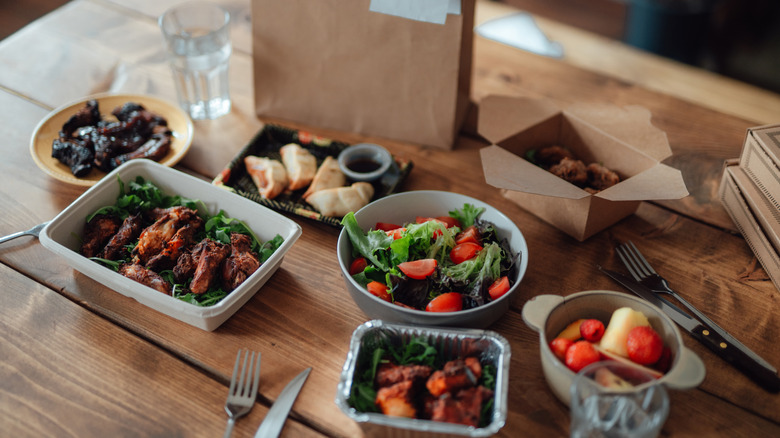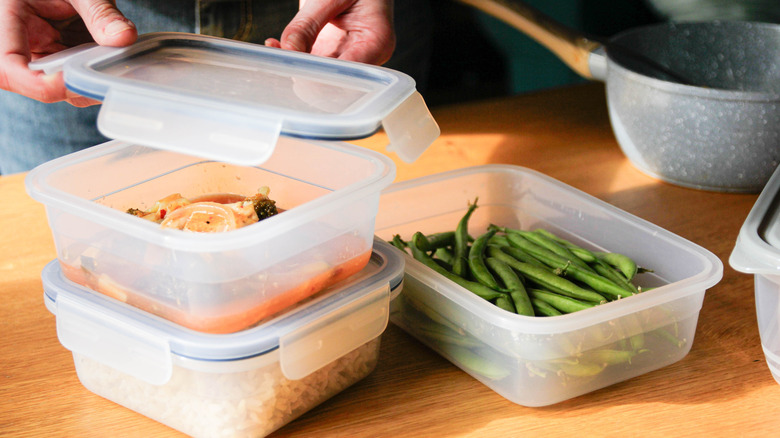How Long You Have To Put Restaurant Leftovers In The Fridge Before They Become Hazardous
Not everyone is thrilled about leftovers, but I think it's safe to say that we can put restaurant leftovers in a category of their own. Restaurant leftovers are sure to be remnants of a delicious meal that you couldn't quite get down in one setting — so you asked for the blessed to-go box. But how you treat those leftovers from the time that you get them until you're ready to consume them, is everything. One misstep can send your stomach into a tizzy, making you pay dearly for that error.
If you make the mistake of leaving leftovers out too long at room temperature, you're giving bacteria the perfect opportunity to grow and thrive. Even though the food might still look fine after a few hours, that doesn't mean it's safe to eat, as leftovers need to be refrigerated within two hours of being served, according to the USDA. If it's sweltering outside (like 90 degrees Fahrenheit, and up), that window shrinks to just one hour. After that, bacteria love to move in and wreak havoc. If you're trying to avoid food poisoning, whether you're boxing up dinner after a night out or grabbing takeout on the go, the clock starts ticking as soon as the food leaves the kitchen.
The danger zone and why it matters
When food hangs out between 40 to 140 degrees Fahrenheit, it's in what food safety experts call the "danger zone." This is the sweet spot for bacteria to multiply. In just a few hours, your perfectly fine meal can turn into a cesspool for salmonella, listeria, and all their lil buddies. And the worst part is that you might not be able to smell it, taste it, or see it coming.
Once food is cooked and removed from a heat source, it begins to cool, and that's where the problem begins. If you're dining out and take a while to head home, or you leave the takeout bag on the counter, that time adds up. Once you remember to put your leftovers away, they may have been sitting out long enough for bacteria to multiply. To avoid that risk, make sure to refrigerate leftovers as soon as you can, preferably within the two-hour mark. Use an insulated bag if you're not going straight home, and don't leave leftovers in a hot car. These small precautions help keep your food safe and reduce the chance of getting sick from what should be an easy second meal.
Storing and reheating leftovers safely
Getting your leftovers in the fridge on time is only part of the equation. Once they're safely stored, how you reheat them is also important. When it's time to eat, reheat leftovers to an internal temperature of 165 degrees Fahrenheit to kill off any germs that may have started to grow while the food was cooling or sitting in the fridge.
Make sure you're using shallow containers to store food, as this allows hot items to cool quickly, keeping it out of the aforementioned danger zone. Avoid stacking hot food in deep containers where it can stay warm too long in the middle and encourage bacterial growth. As for how long leftovers last in the fridge, a good rule of thumb is three to four days. After that, the risk of spoilage increases, even if the food was stored properly. If you're not planning to eat it in that time frame, freezing it is a safer bet.
Food safety might not be the most exciting part of bringing leftovers home, but it's an important one. A few simple steps go a long way toward keeping your meals both enjoyable and safe to eat.


